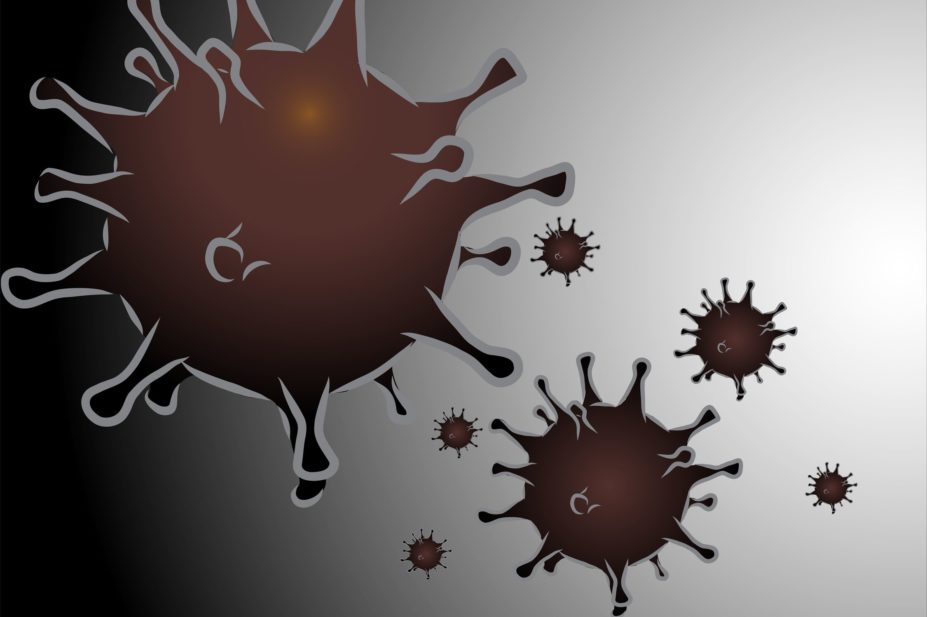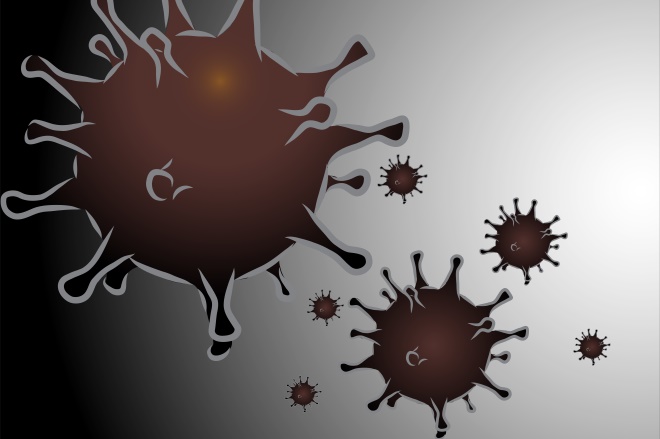
Mclean
Open access article
The Royal Pharmaceutical Society has made this feature article free to access in order to help healthcare professionals stay informed about an issue of national importance.
To learn more about coronavirus, please visit: https://www.rpharms.com/resources/pharmacy-guides/wuhan-novel-coronavirus

Source: Mclean
Researchers are looking at several ways of treating COVID-19, including trialling antiviral drugs and modulating the immune system
When I speak to Carl Heneghan, he is not feeling his best. “I’m on day six now,” he says, of his brush with COVID-19. “And all my family’s had it.” Normally, Heneghan, a professor of evidence-based medicine at the Nuffield Department of Primary Care Health Sciences at the University of Oxford, would be back at work. “I suspect that’s what’s been happening [within the general population, which is] why it’s become such a widespread outbreak,” he says.
Like the majority of those who become infected with severe acute respiratory syndrome coronavirus 2 (SARS-CoV-2) — the virus that causes COVID-19 — Heneghan had a relatively mild form of the disease. However, for those who have become severely ill, doctors have few tools at their disposal.
There are currently no antiviral medicines that have been approved to treat or prevent human coronaviruses, and there is no randomised controlled trial evidence that any treatment beyond best supportive care delivers improved outcomes for patients with COVID-19, according to an NHS position statement on management of COVID-19 in adults with investigational agents, published on 1 April 2020[1]
.
Increasingly, we’re thinking that to prevent severe disease, we’re going to need a combination of antiviral therapy and host-directed therapy
“The current treatment options are based around complications and not treatment of the virus,” Heneghan says, using the example of someone who develops secondary bacterial pneumonia and needs antibiotics, or patients who get cardiac complications and need treatment. However, this may be about to change.
“Increasingly, we’re thinking that to prevent severe disease, we’re going to need a combination of antiviral therapy and host-directed therapy (therapy that targets the response to the virus, rather than the virus itself),” says Graham Cooke, a professor of infectious disease at Imperial College London. Trials of some of the most promising treatments are already under way. “I would expect we see some results soon that suggest a benefit,” Cooke says.
But Cooke, Heneghan and others are keen to point out that trials must be conducted properly in order to yield robust, high-quality data. And that involves a huge coordinated effort, including in deciding which treatments should be prioritised for clinical trials.
Attacking the virus
At the moment, researchers are focusing their attention on several antiviral drugs that have shown promise: the antimalarial drugs chloroquine and hydroxychloroquine; remdesivir, which was developed to treat Ebola; and a combination of the anti-HIV medicines lopinavir and ritonavir, sold under the brand name Kaletra (AbbVie; see Table 1).
| Treatment | Experience so far | Current availability |
|---|---|---|
| Chloroquine/hydroxychloroquine |
| |
| Remdesivir |
|
|
| Lopinavir/ritonavir combination |
|
|
| Favipiravir |
|
|
| Umifenovir |
|
|
| Ribavirin |
|
|
| Steroids |
|
|
| Interferon beta |
|
|
| Interferon alpha |
|
|
| Interleukin 6 inhibitors (IL-6) |
|
|
| Interleukin 1 inhibitors |
|
|
| Convalescent plasma |
|
|
| Antiviral antibody |
|
|
| Recombinant human angiotensin-converting enzyme 2 (ACE2) |
|
|
“These have all shown some evidence of efficacy eitherin vitro or in animal studies,” says Cooke. Some of these data come from studies of the related coronaviruses: severe acute respiratory syndrome (SARS) and Middle East respiratory syndrome (MERS).
If you put chloroquine into cell culture systems, it reduces virus shedding
Chloroquine and its derivative hydroxychloroquine — which are used to treat rheumatoid arthritis and lupus — have received a lot of attention since US president Donald Trump heralded the latter as one of the drugs that could be a potential “game changer” on 19 March 2020. “If you put chloroquine into cell culture systems, it reduces virus shedding,” says Ian Hall, director of the National Institute for Health Research’s Nottingham Biomedical Research Centre. And, he adds, hydroxychloroquine was used in patients in China: “Anecdotally, they’ve claimed some success, and there are some preliminary studies suggesting it may be effective.”
Much of this excitement has been generated by a small open-label French study, in which a significant reduction in viral load was seen in the 20 patients who were treated with the drug[2]
. Another, slightly larger study (with 31 patients who were randomised to the hydroxychloroquine group) out of China reported a reduction in time to clinical recovery, although to date the paper has not been peer-reviewed[3]
.
Hall is hoping that further, larger-scale trials of hydroxychloroquine will provide the missing evidence “in the near future”. This includes the UK-based RECOVERY trial, which is the largest trial of COVID-19 treatments in the world, and which Hall is involved in (see Table 2).
| Trial name | Setting | Eligible participants | Estimated enrolment | Treatments |
|---|---|---|---|---|
| PRINCIPLE (Platform randomised trial of Interventions against COVID-19 in older people) | Primary care | Adults aged >65 years with COVID-19 symptoms, and adults aged 50–64 years with COVID-19 symptoms and certain underlying conditions | 3,000 | Hydroxychloroquine initially, but new drugs can be added in when they become available for testing |
| RECOVERY (Randomised evaluation of COVID-19 therapy) | Secondary care | Adults with confirmed COVID-19 | 5,000 | Liponavir/ritonavir, dexamethasone, hydroxychloroquine, azithromycin |
| REMAP-CAP (Randomised, embedded, multi-factorial, adaptive platform trial for community-acquired pneumonia) | Intensive care unit | Patients community-acquired pneumonia | 6,800 (globally) | Hydrocortisone, ceftriaxone, moxifloxacin or levofloxacin, piperacillin-tazobactam, ceftaroline, azithromycin or clarithromycin, oseltamivir, lopinavir/ritonavir, hydroxychloroquine, interferon beta, anakinra |
Of the specific antivirals that may be effective in treating the virus, “the one that we’re most interested in is remdesivir”, Cooke says. Evidence for its efficacy against SARS-CoV-2 is based on in vitro and animal studies, and anecdotal evidence.
“We don’t know if it’s going to have an impact on outcome,” Cook acknowledges. “But we think there’s a good chance it might be able to inhibit the virus.”
The first trials of remdesivir are expected to conclude at the end of April 2020, but there is already evidence on the efficacy of the anti-retroviral cocktail Kaletra (lopinavir/ritonavir; AbbVie), published in the New England Journal of Medicine on 18 March 2020[4]
.
The results are not promising. The study, comprised of 199 patients, found that no benefit was observed with lopinavir/ritonavir treatment compared with usual care. However, Hall points out: “They did some subanalyses in the study, which suggested there might be some benefit if you give [Kaletra] a bit earlier.”
Cooke agrees: “There may have been a small effect and there was no evidence of harm.” He adds that, given the drug was administered in severely ill, hospitalised patients, “we want to see whether it might be more beneficial in early disease”.
Other antivirals may also be useful. “Favipiravir is another one that’s stoked some interest,” Cooke says, of the anti-flu drug that is produced by Japan’s Fujifilm. Having shown promising results in two open-label studies in China, it was approved as an experimental treatment for coronavirus there[5]
. Another anti-flu drug that has been suggested to be helpful is umifenovir, used widely in Russia and China, but not licensed outside of those countries. However, the evidence for all of these antivirals is “pretty limited” according to Hall. “It’s mostly theoretical.”
The idea is that by reducing the viral load, you can prevent some of the more severe complications
If one of these antivirals can reduce viral replication, it should be possible to limit the severity of disease. Yet it may be that these drugs need to be given relatively early in the course of the infection, before the virus has spread too far. “The idea is that by reducing the viral load, you can prevent some of the more severe complications,” Hall says, although, he cautions that “those are just assumptions”.
However, most of the patients that are seen in hospital are already experiencing more severe symptoms or complications, as a result of the virus. Heneghan, therefore, highlights that: “What you’ve got to do is try [to] get a treatment to those who are severe or critical.”
Modulating the immune system
In an infection, you’re basically at war — it’s your immune system versus the virus
There are two ways of attacking the problem. “In an infection, you’re basically at war — it’s your immune system versus the virus,” Heneghan says. “If your immune system is functioning OK, at some point it will win.” If it is not, you either have to reduce its workload by killing off the virus or give it a boost.
This is where interferon beta — a protein that is produced by the body as a defensive response to viruses — comes in. Several trials are examining its potential in helping patients with severe COVID-19, including a placebo-controlled trial of an inhaled interferon beta formulation produced by Synairgen, led by Tom Wilkinson at the University of Southampton, and which Hall is also involved in.
Some people will not produce adequate amounts of interferon beta, says Hall, “either because we’ve got other diseases or our immune response is less strong, as tends to happen as we get older.”
Although the immune system is vital in fighting off infection, sometimes it can go into overdrive, leading to damaging inflammation. This is the thinking behind trials of the steroid dexamethasone. “Low-dose steroids might prevent some lung inflammation, which might reduce the severity of disease in some patients,” Hall says.
However, he cautions that dosage will be vital, since there is some evidence that suggests high-dose steroids could make the disease worse. For example, a recent review in The Lancet concluded that the use of steroids in the 2002 SARS outbreak may have actually worsened outcomes[6]
. The problem, says Heneghan, is that by reducing the inflammatory response, you also reduce the rest of the immune response. “So, it looks like you prolong the viral load, which is not what you want to do.”
Other strategies to dampen the damaging inflammation in people with severe COVID-19 may be better targeted. “There’s a little bit of evidence that interleukin 6 (IL-6) levels are elevated in these patients,” says Hall. IL-6 is a cell-signalling protein that is released during the inflammatory response. There are existing monoclonal antibody treatments to target IL-6, and trials of several of these inhibitors are under way.
Monoclonal antibodies could also be used to bind to and neutralise the virus itself. Regeneron Pharmaceuticals, which is also testing its IL-6 inhibitor in COVID-19, is one of the companies looking into this approach. Using genetically modified mice, which have similar immune systems to humans, the company “will select a cocktail of two fully-human antibodies which can be used to treat patients already infected with the disease”, a spokesperson says.
By using the antibodies to bind viral proteins, it is hoped that SARS-CoV-2 will be less likely to mutate and escape the drug. Another advantage of this approach is that it could potentially be used as both a treatment and prophylaxis.
Of course, the body will naturally produce antibodies to the virus once exposed; so researchers are asking what would happen if you could give people with the disease, or those most likely to get it, some of those antibodies. Using such ‘convalescent plasma’ is an old technique — it was deployed, for example, in the 1918 flu pandemic with some success. The treatment, which involves harvesting blood from those who have had and recovered from COVID-19, has been approved in the United States as an experimental treatment in clinical trials and for critically ill patients. It was approved in the UK in March 2020 and trials are expected to start shortly.
Chloroquine and hydroxychloroquine are also thought to have potential as a prophylactic therapy. The COPCOV trial, led by University of Oxford scientists, was launched at the end of March 2020 to test this proposition in 40,000 healthcare workers across Asia and Europe.
Optimising health
It is becoming clear that a lot of patients who are dying with COVID-19 have underlying comorbidities, such as heart or lung problems. “Most of the deaths in Wuhan were from cardiovascular conditions,” Heneghan says. “There’s not just the virus; it’s also about management of comorbidities,” he adds. This raises the question of how to optimise people’s control of known pre-existing conditions.
Whether patients have underlying co-morbidities or not, there is an advantage to fine-tuning or repurposing existing medicines, rather than developing new ones. “Chloroquine has been used extensively,” says Hall. “It’s got a well-recognised side effect profile.” This means that clinicians can already be on the lookout for adverse events and factor potential drug interactions into prescribing.
There are all sorts of approaches that can and should be used to study a new pathogen like this
Yet, on the other hand, new drugs might be better targeted and more effective. “There are all sorts of approaches that can and should be used to study a new pathogen like this,” says David Gordon, an associate researcher at the University of California, San Francisco, who is involved in mapping the interactions between the SARS-CoV-2 virus and human cells (see Box).
Box: In with the new
Although most of the frontrunners for a COVID-19 treatment are existing drugs that would be repurposed, new drugs may be better targeted and more effective. Efforts are underway to look at the virus and its interactions with human cells mechanistically, which may direct research into drug discovery.
One such project is an ‘interactome’ produced by the Krogan Laboratory at the University of California, San Francisco — of which, David Gordon, associate researcher at the university, is a member[7]
. The interactome is a map of all the protein–protein interactions between the virus and a human cell line — in this case, human embryonic kidney 293T cells. The team is now creating a map for a lung cell line.
The team has already identified “66 druggable human proteins or host factors targeted by 69 existing [US Food and Drug Administration-approved] drugs, drugs in clinical trials and/or preclinical compounds” and hopes to focus the list further through in vitro studies.
Gordon believes that by focusing the search, it may give way to “further insights that would otherwise be difficult to spot in larger studies”.
“Maybe we’ll get there quicker this way,” he says.
Scientists are already using a mechanistic approach to trial new drugs. For example, off the back of research showing that SARS-CoV-2 enters human cells through the angiotensin-converting enzyme 2 (ACE2) receptor, biotech company Apeiron has just received regulatory approval to trial its recombinant ACE2 — called APN01[8]
. The idea is that the virus would bind to the recombinant ACE2 instead of ACE2 on cell surfaces, preventing it from entering cells and replicating.
Moving quickly
A trial which, a year ago, might have taken six months to get off the ground, is off the ground in less than a month now
In fact, the speed at which research on COVID-19 is progressing is impressive. For example, Gordon says of his work: “What normally would take months, or maybe a year, took weeks.” He credits this to a dedicated team that dropped everything to focus on the project.
Hall says that the UK regulatory process is also speeding up. “A trial which, a year ago, might have taken six months to get off the ground, is off the ground in less than a month now.”
However, there are still plenty of challenges in researching the disease. For a start, recruiting patients into a trial when healthcare workers are “just trying to firefight,” as Hall describes it, is an additional burden. On top of this, the trial must have the right design and outcomes to obtain good-quality data.
Large sample sizes are required to achieve the good-quality data needed. Some trials are nationwide, such as the UK-based RECOVERY trial that will investigate some of the top contenders — including lopinavir/ritonavir, low-dose dexamethasone and hydroxychloroquine — in a multi-arm, adaptive trial. Others transcend borders, such as REMAP-CAP, a trial into interventions for community-acquired pneumonia that was already running in 50 sites across 13 countries and has simply adapted to include COVID-19.
Heneghan believes that an adaptive design — when researchers can modify dosage or drugs in an ongoing trial, as evidence starts to emerge about what is most effective — is essential. “You have this ability to be flexible without saying we stop the trial, we write it up and then we come back again in six months,” he explains.
In terms of outcomes, Hall states: “The most important endpoint for any COVID-19 study is going to be death or admission to a critical care unit.” And, given the relatively high mortality rate and short timeline in critically ill patients, results should come in quickly. “You could imagine there’ll be early endpoint data coming out within six to eight weeks,” he says.
Accessing treatment
The advice we’re giving very strongly in our own setting is not to be prescribing these outside of a trial
The rapid initiation of clinical trials means that most patients who are severely ill in the UK may well have access to experimental treatments. However, at the moment, the UK is controlling the supply of drugs that may be relevant for the management of COVID-19 centrally. “The advice we’re giving very strongly in our own setting is not to be prescribing these outside of a trial,” says Hall.
This is important, not only because the efficacy of such drugs is unproven and they all have potential side effects, but also because some people rely on these medicines to control other illnesses. “The global supply of medicines is so fragile,” Heneghan says. And, he worries that “if we suddenly discovered overnight that chloroquine did actually reduce the mortality [of COVID-19] significantly, where will we get the drugs from?” There would be a scramble between different countries and he is not confident the UK would win.
Working together
Generally, Heneghan believes that more co-operation and central leadership is needed to combat COVID-19. He worries that a lot of the studies published so far have been small and relied on different protocols, making them hard to analyse. “We need to do trials in a coordinated way, so that you can rapidly systematically review them and bring the evidence together,” he says.
The World Health Organization (WHO) recently launched its SOLIDARITY trial, which aims to do just this. It is an adaptive trial design that focuses on remdesivir, lopinavir/ritonavir, interferon beta and chloroquine. According to a WHO statement: “The trial provides simplified procedures to enable even hospitals that have been overloaded to participate.”
This kind of co-operation must surely be essential in a global pandemic, such as this. “Competition has its benefits,” Heneghan acknowledges. “But it all goes out the window in this situation.”
References
[1] High Consequence Infectious Diseases Network. 2020. Available at: https://www.ncl-mon.nhs.uk/wp-content/uploads/Guidelines/0_covid19_interim_position_statement.pdf (accessed April 2020)
[2] Gautret P, Lagier JC, Parola P et al. Int J of Antimicrob Agents 2020; In press. doi: 10.1016/j.ijantimicag.2020.105949
[3] Chen Z, Hu J, Zhang Z et al. medRxiv 2020. doi: 10.1101/2020.03.22.20040758
[4] Cao B, Wang Y, Wen D et al. N Engl J Med 2020. doi: 10.1056/NEJMoa2001282
[5] Chen C, Huang J, Cheng Z et al. medRxiv 2020. doi: 10.1101/2020.03.17.20037432
[6] Russell CD, Millar JE & Baillie JK. Lancet 2020;395(10223):473–475. doi: 10.1016/S0140-6736(20)30317-2
[7] Gordon DE, Jang GM, Bouhaddou M et al. bioRxiv 2020. doi: 10.1101/2020.03.22.002386
[8] Hoffmann M, Kleine-Weber H, Schroeder S et al. Cell. 2020. doi: 10.1016/j.cell.2020.02.052


